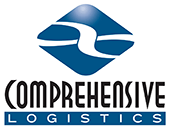
Roof Headliners
On the surface, a vehicle’s headliner might seem rather pedestrian to passengers.
But there’s a lot more to a headliner than meets the eye. A-surface features, such as dome lights, visors, and the overhead console make up just a portion of headliners. It’s what’s underneath the headliners—what people can’t see—that enables the performance of several critical interior functions. A coax cable and series of wire harnesses comprise a “network” of sorts that power key headliner electrical components and microphones, as well as the radio antenna and satellite connectivity.
The assembly of this intricate wiring and A-surface features requires precision, efficiency, and accuracy. In its high-velocity manufacturing-support operations, CLI consistently meets car and SUV headliner assembly requirements of automotive OEMs.
We employ a six-station conveyor build process to assemble 30-45 variations of headliners.
During assembly, rollover impact-protection blocks and other parts are attached to the headliner substrate. A robot applies glue to the substrate and a duel set of robots then affix parts onto the glue areas. In a subsequent process, robots place a pattern of glue onto the C-surface of the substrate and operators manually attach the wiring harnesses to the glue path laid by the robots.
Error-proofing is performed by multiple sensors and cameras, while a continuity system ensures proper electrical connections.
As the final quality-control test on assembled headliners, CLI uses a customized black light system in which the light interacts with phosphorescing elements in the glue to detect the most miniscule glue strands that can inadvertently end up on the A-surfaces of headliners.
